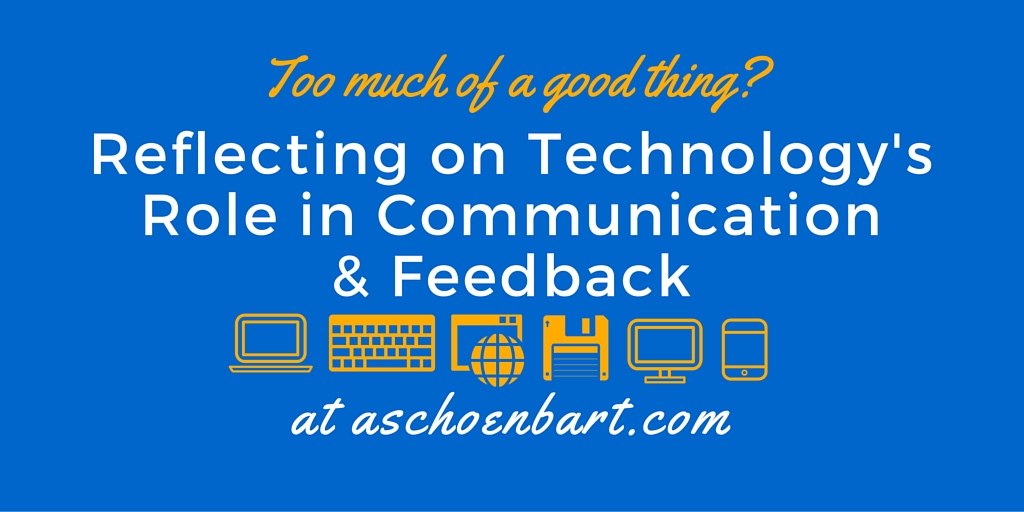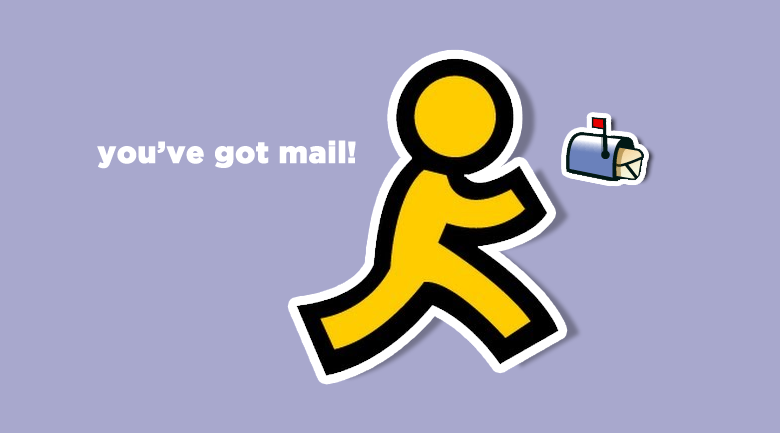Reflecting on Technology's Role in Communication & Feedback

My lessons this week rely on Google Classroom, Forms, Docs, GMail, Remind, and so much more. In my mind each has a distinctive purpose and my choices support learning objectives and outcomes. But my mind is a weird place--it’s a chaotic mashup of tech and pedagogy, where my long, sometimes convoluted workflows work for me--but do they work for my students?

Are we giving our students too many options and norms? Is my tech-infused style of communication and feedback too much of a good thing?
Last week, I wrote about the power of Google Forms in addition to, or even instead of, collecting and providing feedback to students in Google Classroom. Click here to read #GoogleClassroom vs. #GoogleForms for Interacting with Student Work. With more reflection, I’ve started to think about the self-efficacy in technological communication. With technology, my communication and feedback can be more meaningful, specific, and efficient than ever before, and it also has permanence. Transparency and accountability increases when the reliability and consistency of communication improves and we have timestamped records of submissions and online interactions.
Still, when I return student work on Classroom, students find their feedback on Classroom or in their e-mail. When I automate a Google Form, it’s usually through e-mail, too. But then our gradebooks are in the school’s learning management system, so no matter where the grades started, they end up in the LMS gradebook. This is where the averages are calculated and the students information is communicated to parents and administration.
Are we giving students too many choices or destinations?
I see a clear and distinctive difference in the apps and how and why I use each to return student work. Still, if the destination for that returned work changes every time, than the execution is flawed no matter my intent. I need to students to be able to easily and consistently read, use, and grow from my feedback and communication.

Building an E-Mail Culture
So far, I’ve asked more questions than I have answers for. Do we teach students to value the app-smashing mindset that I live by--or do I need to adapt to streamline my work to meet their needs? I think the answer lies in a balance, and in the end I need to do what works for my students, just like you do for yours.
Tools and ideas to transform education. Sign up below.
For my students, I think that means that building a culture where e-mail matters. With texts and social media, most of my students don’t use e-mail the ways I do--as a personal and professional form of communication. Many don’t even know how to write a formal or professional e-mail or letter. But this type of communication is essential in 21st century learning
This year, I’ve used e-mail to provide feedback on student work, automate responses on Forms, express concerns about student work, and make contact with parents. Sometimes this works great. Sometimes my students don’t check their e-mail and my message is lost. E-mail and technology can never replace face to face conversation--and that’s something I think I need to consider more often--but has much more value than my students give it credit for. I want to teach my students to write e-mails and to make checking e-mail regularly a norm in my classroom and school.
Since Classroom notifies students of new assignments and work through e-mail and my automated Forms does the same, that might just solve my problems for now. If students check their school e-mails regularly, we can use technology to communicate more effectively and make feedback matter.
Still, my concerns remain. How much is too much?
How do you find the balance in communication and feedback? What tools do you find most effective? Does education have too much of a good thing, and if so, what are the consequences? Share your thoughts in the comments below or on Twitter.
cross posted at www.aschoenbart.com
Adam Schoenbart is a high school English teacher, Google Education Trainer, and EdD candidate in Educational Leadership. He teaches grades 10-12 in a 1:1 Chromebook classroom at Ossining High School in Westchester County, NY and received the 2014 LHRIC Teacher Pioneer Award for innovative uses of technology that change teaching and learning. Read more at The SchoenBlog and connect on Twitter @MrSchoenbart.
